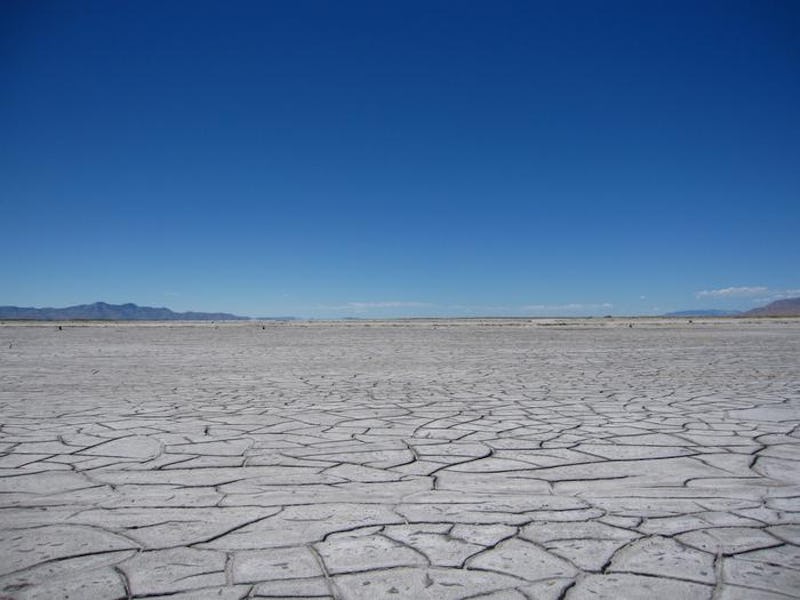The Great Salt Lake Emitted More Than 4 Million Tons of Greenhouse Gasses In 1 Year
The Great Salt Lake is drying out, and emitting more carbon dioxide, because of human activity.

In 2020, a group of scientists started studying the Great Salt Lake in Utah in a different view than anyone had before. They suspected that the eighth largest saline lake in the world might be contributing to global warming as it dries out. They were right.
The new study, published this week in the journal One Earth, found that the Great Salt Lake emitted 4.1 million tons of greenhouse gasses in 2020. And if it’s happening there, similar lakes around the world could be doing the same.
Human activity is driving hotter climates around the world through direct emissions. But they also double down on the problem in other ways. For instance, overheated forests erupt in wildfires that produce greenhouse emissions of their own. Similarly, the Great Salt Lake is primed to give off large amounts of methane and carbon dioxide as it dries out, because lake beds tend to emit more greenhouse gasses into the atmosphere than lake waters do.
“Ultimately I felt that this is important information for people to have, so that we can get a better picture of how our carbon footprint is being played out ecologically. And of course, it would be great if this helps efforts to re-wet the Great Salt Lake,” Soren Brothers, study author and climate change curator at the Royal Ontario Museum in Toronto, tells Inverse via email.
Desiccated lake bed of Great Salt Lake in Utah.
The Great Salt Lake is drying out because of human activity. The hotter climate plays one part. But the lake is also poorly managed. Brothers says human water consumption from the lake, primarily for agriculture, urban uses, and industry, has caused the lake to dry out, or desiccate. According to the paper, the Great Salt Lake may completely desiccate by the end of this decade.
The Great Salt Lake’s desiccation “has already come up as a biodiversity and human health crisis,” Brothers says. The recent work adds a new layer. The Great Salt Lake’s greenhouse gas release came from its lake bed, which is increasingly getting exposed to air.
“When lake beds are wet, they are better at storing the carbon that is deposited there,” Brothers explains. When lake beds are exposed to air, it’s “an ideal situation” for bacteria to consume the organic carbon once buried under the water. After the bacteria metabolizes the carbon, they exhale carbon dioxide. It’s not unlike what humans do after they eat, excreting and breathing out gasses.
As bacteria exhaled and farted away the food it never could access before, Utah’s human-linked greenhouse gas emissions went up by 7 percent in 2020.
The Great Salt Lake is a chronically-desiccated salt lake, and there are others too: The Caspian Sea, the Aral Sea, and Lake Urmia in Iran are some examples.
“Ideally, this process will now be considered alongside other actions with how we use our landscapes and waters, as societies reconfigure ourselves to minimize our greenhouse gas emissions and maximize carbon drawdown,” Brothers says.